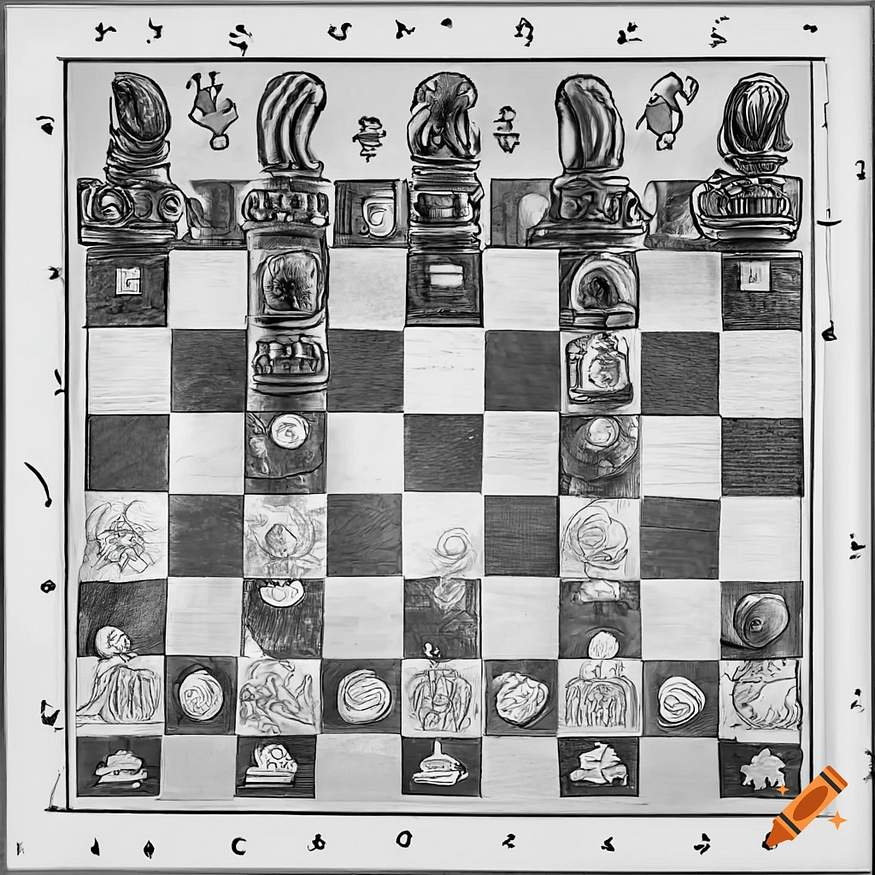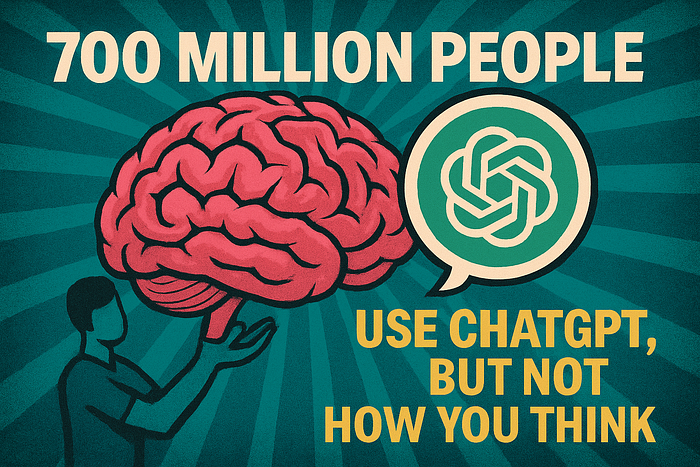The Rise of Artificial Intelligence in Chess
Last Updated on July 25, 2023 by Editorial Team
Author(s): Clemens Jarnach ⚡️
Originally published on Towards AI.
And The Epic Battle of Kasparov vs. Deep Blue
Chess has been one of the world’s most popular board games for centuries, and for centuries humans have reigned supreme as the most formidable chess players on the planet. In the 1980s, the idea of a computer beating the best human players was laughable. But in 1997, the impossible happened — a computer beat the world champion.
One of the fascinating developments in the history of chess has been the rise of computer chess engines, which use artificial intelligence algorithms to analyze positions and make moves. With all the buzz surrounding modern AI applications such as ChatGPT, it’s easy to forget the rich history of chess engines and their impact on the game and the development of artificial intelligence more generally. In this article, I’ll take a closer look at the evolution of chess engines, from the earliest mechanical devices to the cutting-edge software programs of today.
The birth of modern artificial intelligence (AI) models for computers began in the 1950s. The term “artificial intelligence” was first coined in 1956 at the Dartmouth Conference, where a group of scientists came together to discuss the possibility of creating machines that could simulate human intelligence. This led to the development of some of the earliest AI models and some of the first applications were chess engines.
A chess engine is a computer program that uses artificial intelligence (AI) algorithms to play chess. These programs are designed to analyze chess positions, calculate possible moves and their consequences, and choose the best move based on a set of evaluation criteria.
The game of chess has always been regarded as the ultimate test of strategic thinking and decision-making. It requires a keen understanding of the nuances of the game and the ability to think several moves ahead. For centuries, humans were the undisputed masters of the game. But as technology progressed and computers became more advanced, the possibility of a machine beating the best human players became a topic of discussion. As well as being an interesting battle between man and machine, or a great marketing stunt for IBM, chess provided the perfect playground for artificial intelligence engineers to test and develop their models.
As with pretty much everything in modern computing, Alan Turing and Claude Shannon laid the foundations for chess engines.
Alan Turing and Claude Shannon are two prominent figures in the history of computing and information theory. Alan Turing was a British mathematician and computer scientist who was instrumental in breaking the German Enigma code during the Second World War. He is also known for his work on the concept of a universal machine, which laid the foundations for modern computing. Claude Shannon was an American mathematician and electrical engineer who is considered the father of modern digital circuit design theory and information theory.
Shannon (1950) published a paper describing a program that could potentially play chess against a human. A year later, Turing created the first computer chess algorithm, but the hardware available at the time was not powerful enough to run it effectively. Soon after, Dietrich Prinz, a colleague of Turing’s, succeeded in creating a basic chess algorithm that was implemented on the Ferranti Mark 1, the first commercially available computer. Although the computer did not have the power to play a full game of chess, it served as a proof of concept for chess computing.
From these more theoretically motivated developments, the beginning of computer chess engines really blossomed in practical application in the late 50s and 60s, with dramatic software and hardware innovations enabling more powerful machines.
But in 1997, the impossible happened. IBM’s Deep Blue chess computer defeated world champion Garry Kasparov in a six-game match. Deep Blue was a supercomputer developed by IBM that was specifically designed to play chess at a high level, with a sophisticated algorithm and powerful processing system. Deep Blue was the culmination of years of research and development, and its victory over Kasparov was a major milestone in the field of artificial intelligence.
Garry Kasparov is a Russian chess grandmaster and former World Chess Champion. He became the youngest-ever undisputed World Chess Champion at the age of 22 and held the title for over a decade. Kasparov is widely regarded as one of the greatest chess players of all time, and his matches against computers such as Deep Blue have become legendary in the history of the game.
The 1997 showdown between Garry Kasparov, the reigning world chess champion, and Deep Blue, a supercomputer developed by IBM, was a momentous occasion in the history of artificial intelligence. The match was watched by millions around the world, who held their breath as the two competitors battled it out.
In the end, Deep Blue emerged victorious, defeating Kasparov in six games out of a possible 12. The victory was a watershed moment for AI, showing that machines were capable of outsmarting even the best human players in complex games like chess.
The basic structure of chess can be viewed as a search tree problem, where each state represents a particular configuration of chess pieces on the board, and the allowed actions correspond to the legal moves that the current player can make in that particular configuration.
The Deep Blue system, consisting of an IBM RS/6000 SP computer with 30 nodes (or 30 processors) and 480 individual chess search engines, was designed to perform parallel processing and chess tree searches. On average, Deep Blue was able to evaluate about 100 million positions per second. Deep Blue used several concepts used in earlier chess programs, such as quiescent search, iterative deepening, transposition tables and NegaScout (Campbell et al, 2022).
Today chess engines are indispensable tools for chess players, who use them to analyze their games and improve their strategies. But the memory of that fateful match in 1997 still lingers, a testament to the power of technology. Of course, the urge to develop even better chess engines has not ceased since then, and IBM’s success with Deep Blue has not settled the debate but has fuelled the race for better and more sophisticated computer models.
The current best chess computer is generally considered to be Stockfish, an open-source chess engine developed by a team of programmers from around the world. Stockfish has been consistently at the top of computer chess rating lists for several years and has won numerous computer chess championships and tournaments. One of the reasons for Stockfish’s success is its highly efficient search algorithm, which allows it to analyze millions of moves per second and make highly accurate predictions about the best moves to make in any given position. Other top chess engines include Leela Chess Zero, Komodo and Houdini.
Conclusion
The evolution of chess engines began with the earliest mechanical devices and has progressed to the cutting-edge software programs of today. Alan Turing and Claude Shannon laid the foundations for chess engines, with Shannon publishing a paper describing a program that could potentially play chess against a human. In 1997, the impossible happened: a computer beat world chess champion Garry Kasparov.
IBM’s Deep Blue chess computer defeated world champion Garry Kasparov in a six-game match. The victory was celebrated as a triumph of machine over man, and Deep Blue’s victory demonstrated the rise of artificial intelligence. Chess was used to test the computational capabilities of computers and to advance computer science by developing the ability of computers to perform the complex calculations needed to discover new drugs, perform comprehensive financial modeling, search large databases and perform massive computations in various fields of science. Deep Blue had a significant impact on computing in several industries, and its architecture was applied to financial modelling, data mining and molecular dynamics.
Today, chess engines are indispensable tools for chess players, who use them to analyze their games and improve their strategies — just one example of how artificial intelligence is being used in almost every aspect of our technology-filled lives.

Before you leave
- U+1F44F Clap for the story
- U+1F4F0 Subscribe for more posts like this: Clemens Jarnach U+26A1️
- U+1F449U+1F448 Please follow me: Medium U+007C Twitter U+007C LinkedIn
Join thousands of data leaders on the AI newsletter. Join over 80,000 subscribers and keep up to date with the latest developments in AI. From research to projects and ideas. If you are building an AI startup, an AI-related product, or a service, we invite you to consider becoming a sponsor.
Published via Towards AI
Take our 90+ lesson From Beginner to Advanced LLM Developer Certification: From choosing a project to deploying a working product this is the most comprehensive and practical LLM course out there!
Towards AI has published Building LLMs for Production—our 470+ page guide to mastering LLMs with practical projects and expert insights!

Discover Your Dream AI Career at Towards AI Jobs
Towards AI has built a jobs board tailored specifically to Machine Learning and Data Science Jobs and Skills. Our software searches for live AI jobs each hour, labels and categorises them and makes them easily searchable. Explore over 40,000 live jobs today with Towards AI Jobs!
Note: Content contains the views of the contributing authors and not Towards AI.
















